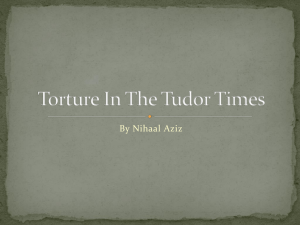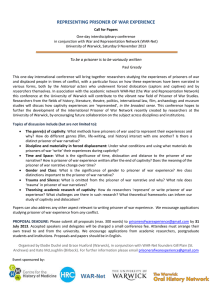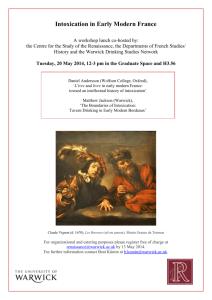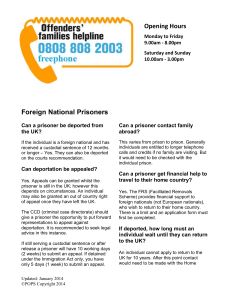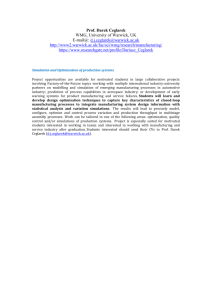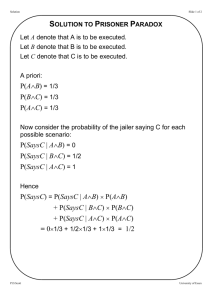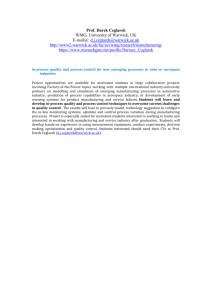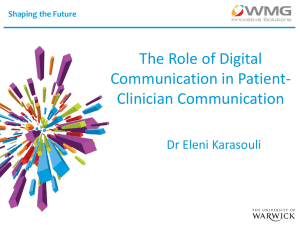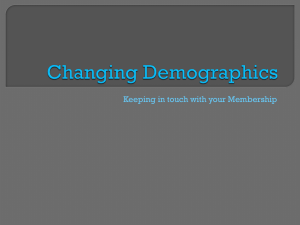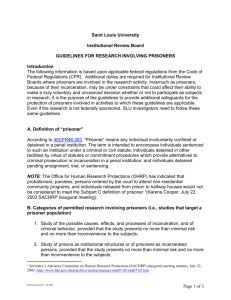Conference Report - University of Warwick
advertisement
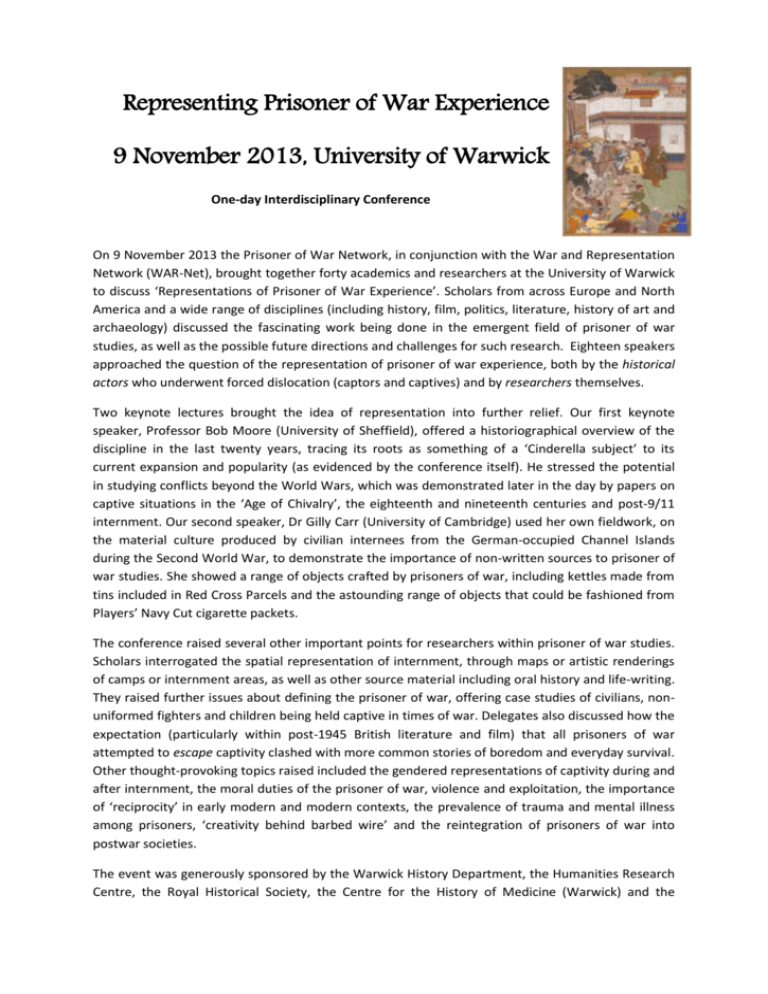
Representing Prisoner of War Experience 9 November 2013, University of Warwick One-day Interdisciplinary Conference On 9 November 2013 the Prisoner of War Network, in conjunction with the War and Representation Network (WAR-Net), brought together forty academics and researchers at the University of Warwick to discuss ‘Representations of Prisoner of War Experience’. Scholars from across Europe and North America and a wide range of disciplines (including history, film, politics, literature, history of art and archaeology) discussed the fascinating work being done in the emergent field of prisoner of war studies, as well as the possible future directions and challenges for such research. Eighteen speakers approached the question of the representation of prisoner of war experience, both by the historical actors who underwent forced dislocation (captors and captives) and by researchers themselves. Two keynote lectures brought the idea of representation into further relief. Our first keynote speaker, Professor Bob Moore (University of Sheffield), offered a historiographical overview of the discipline in the last twenty years, tracing its roots as something of a ‘Cinderella subject’ to its current expansion and popularity (as evidenced by the conference itself). He stressed the potential in studying conflicts beyond the World Wars, which was demonstrated later in the day by papers on captive situations in the ‘Age of Chivalry’, the eighteenth and nineteenth centuries and post-9/11 internment. Our second speaker, Dr Gilly Carr (University of Cambridge) used her own fieldwork, on the material culture produced by civilian internees from the German-occupied Channel Islands during the Second World War, to demonstrate the importance of non-written sources to prisoner of war studies. She showed a range of objects crafted by prisoners of war, including kettles made from tins included in Red Cross Parcels and the astounding range of objects that could be fashioned from Players’ Navy Cut cigarette packets. The conference raised several other important points for researchers within prisoner of war studies. Scholars interrogated the spatial representation of internment, through maps or artistic renderings of camps or internment areas, as well as other source material including oral history and life-writing. They raised further issues about defining the prisoner of war, offering case studies of civilians, nonuniformed fighters and children being held captive in times of war. Delegates also discussed how the expectation (particularly within post-1945 British literature and film) that all prisoners of war attempted to escape captivity clashed with more common stories of boredom and everyday survival. Other thought-provoking topics raised included the gendered representations of captivity during and after internment, the moral duties of the prisoner of war, violence and exploitation, the importance of ‘reciprocity’ in early modern and modern contexts, the prevalence of trauma and mental illness among prisoners, ‘creativity behind barbed wire’ and the reintegration of prisoners of war into postwar societies. The event was generously sponsored by the Warwick History Department, the Humanities Research Centre, the Royal Historical Society, the Centre for the History of Medicine (Warwick) and the Warwick Oral History Network (based at the Institute for Advanced Studies). This was the first event of the Prisoner of War Network (http://powstudiesnetwork.wordpress.com/), founded Elodie Duché and Grace Huxford (History PhD Candidates, Warwick) in 2012 to bring together researchers studying prisoners of war and displaced populations. This interdisciplinary network is bilingual (English and French) and has over 50 members from Europe and America. It distributes regular newsletters and hopes to host future events to encourage collaboration on the subject across disciplines and institutions. Grace Huxford, PhD Candidate, History Department, University of Warwick
